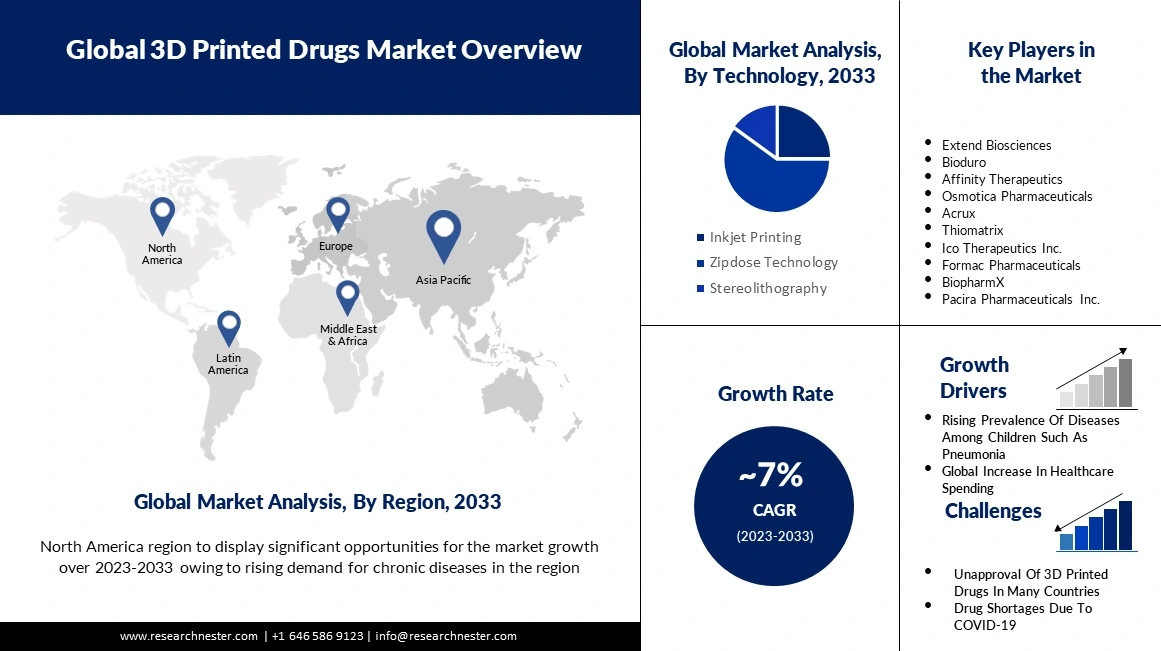
3D Printed Drugs Market size was valued at USD 231.4 million in 2024 and is poised to cross USD 583.03 million by the end of 2037, expanding at more than 7.3% CAGR during the forecast period i.e., between 2025-2037. In the year 2025, the industry size of 3D printed drugs is estimated at USD 245.1 million.. The growth of the market can be attributed primarily to the rising 3D printing of pharmaceuticals. For instance, 3D printing of pharmaceuticals have increased year on year Valued at USD 174 million in 2020 and anticipated to grow to USD 28 million by 2025. In 2020, the 3D printing of pharmaceuticals accounted for USD 174 million and is expected to reach USD 28 million by 2025. There is an opportunity to capitalize on the benefits and overcome the challenges associated with 3D printing of pharmaceuticals.
Powder-liquid three-dimensional (3DP) printing technologies are used to develop 3D printed drugs. By using an aqueous fluid, different layers of powder can be bonded and multiple products can be produced. Three-dimensional powder-liquid drugs or pills are comparatively more soluble than two-dimensional drugs or pills. Furthermore, 3D printed drugs are able to dissolve insoluble compounds such as silver chloride very easily. 3D printed high dose drugs can also be dissolved within seconds, making them more acceptable. As well as this, 3D-printed drugs are comparatively reliable pills when taken at the right dosage. Moreover, rising number of chronic diseases, rising adoption of technological advancements, advantages of 3D printed drugs over general drugs such as low cost and better solubility along with, growing demand for self-medication. For instance, approximately 90% of surgical and medical wards have policies allowing patients to self-administrate.

Author Credits: Radhika Pawar
Copyright © 2024 Research Nester. All Rights Reserved

FREE Sample Copy includes market overview, growth trends, statistical charts & tables, forecast estimates, and much more.
Have questions before ordering this report?